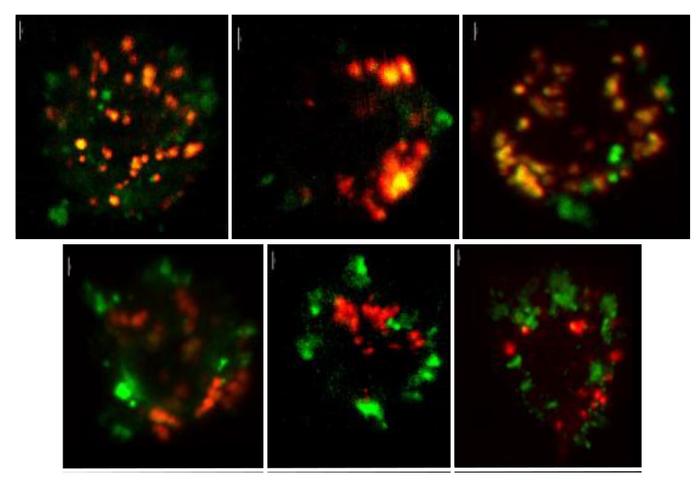Researchers at Stanford University School of Medicine, Yale University School of Medicine, and the Hospital for Special Surgery Research Institute have uncovered new details about how the immune system prevents the production of antibodies that can recognize and damage the body’s own, healthy tissues. The study, to be published September 29 in the Journal of Experimental Medicine (JEM), also reveals how this process is impaired in autoimmune disorders such as systemic sclerosis and systemic lupus erythematosus and suggests potential new strategies to treat these diseases.

Credit: © 2023 Çakan et al. Originally published in Journal of Experimental Medicine. https://doi.org/10.1084/jem.20230944
Researchers at Stanford University School of Medicine, Yale University School of Medicine, and the Hospital for Special Surgery Research Institute have uncovered new details about how the immune system prevents the production of antibodies that can recognize and damage the body’s own, healthy tissues. The study, to be published September 29 in the Journal of Experimental Medicine (JEM), also reveals how this process is impaired in autoimmune disorders such as systemic sclerosis and systemic lupus erythematosus and suggests potential new strategies to treat these diseases.
B cells are a type of white blood cell that help to fight off infections by producing antibodies capable of recognizing foreign molecules, known as antigens, produced by invading pathogens such as bacteria and viruses. But some B cells generate antibodies that recognize “self-antigens” produced by the body’s own cells, potentially causing the immune system to attack healthy tissues by mistake, leading to a variety of autoimmune diseases.
To help stop this from happening, the immune system tries to eliminate self-reactive B cells by exposing them to self-antigens as they develop in the bone marrow. This process, known as central tolerance, is thought to be controlled by B cell receptors (BCRs) on the surface of the developing B cells. Cells with BCRs that bind to self-antigens are removed before they can exit the bone marrow and enter the circulation.
In the new JEM study, however, research teams led by Eric Meffre at Yale University School of Medicine and Franck J. Barrat at the Hospital for Special Surgery in New York report that central tolerance also depends on a receptor called TLR9. This receptor is located inside B cells in compartments known as late endosomes and is activated by binding to fragments of DNA.
The researchers discovered that depleting TLR9 impairs central tolerance and causes mice to produce increased numbers of self-reactive B cells and antibodies. Meffre and Barrat’s teams found that TLR9 activity is also reduced in the B cells of patients with systemic sclerosis, an autoimmune disease that damages the skin, joints, and internal organs. Similar decreases in TLR9 activity have previously been observed in lupus patient B cells as well.
The researchers determined that this reduction in TLR9 activity is due to a protein called CXCL4, which, like TLR9, can bind to DNA fragments. CXCL4 levels are elevated in patients with systemic sclerosis and lupus, and the researchers found that, when it binds to DNA fragments, CXCL4 prevents them from being delivered to late endosomes, where they would normally be able to activate TLR9 and induce B cell tolerance.
“Our data challenge the current paradigm that BCR signaling alone is responsible for the deletion of self-reactive B cells in the bone marrow, since we demonstrate that TLR9 signaling plays an essential role in the establishment of central B cell tolerance,” says Meffre, who is now a professor at Stanford University School of Medicine. “Correcting defective TLR9 function in B cells from patients with systemic sclerosis and perhaps other autoimmune diseases, potentially by neutralizing CXCL4, may represent a novel therapeutic strategy to restore B cell tolerance.”
Çakan et al. 2023. J. Exp. Med. https://rupress.org/jem/article-lookup/doi/10.1084/jem.20230944?PR
# # #
About Journal of Experimental Medicine
Journal of Experimental Medicine (JEM) publishes peer-reviewed research on immunology, cancer biology, stem cell biology, microbial pathogenesis, vascular biology, and neurobiology. All editorial decisions on research manuscripts are made through collaborative consultation between professional scientific editors and the academic editorial board. Established in 1896, JEM is published by Rockefeller University Press, a department of The Rockefeller University in New York. For more information, visit jem.org.
Visit our Newsroom, and sign up for a weekly preview of articles to be published. Embargoed media alerts are for journalists only.
Follow JEM on Twitter at @JExpMed and @RockUPress.
Journal
Journal of Experimental Medicine
DOI
10.1084/jem.20230944
Method of Research
Experimental study
Subject of Research
Animals
Article Title
TLR9 ligand sequestration by chemokine CXCL4 negatively affects central B cell tolerance
Article Publication Date
29-Sep-2023
COI Statement
L.B. Ivashkiv reported “other” from Ono Pharmaceuticals outside the submitted work. E.L. Herzog reported grants from Bristol Myers, grants from Boehringer Ingelheim, personal fees from Boehringer Ingelheim, grants from the National Institutes of Health, and grants from DOD outside the submitted work. F.J. Barrat reported “other” from Ipinovyx Bio, personal fees from Boehringer Ingelheim, and personal fees from Astra Zeneca outside the submitted work; in addition, F.J. Barrat had a patent to PCT63/255,336 pending (Hospital for Special Surgery). No other disclosures were reported.




